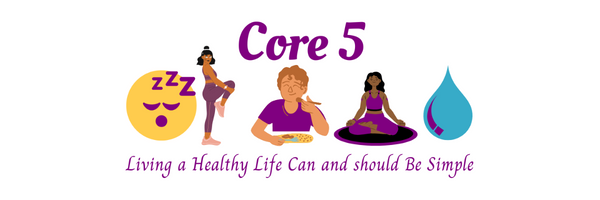For part one on this topic, click here. In Why is Healthy Change so Difficult, Part 2, we’ll dive into some brain science to understand more about why healthy change is so tricky to maintain. If you feel like you’re alone in the struggle, I hope that by the end of this article you’ll realize that the struggles you face are normal, and maybe this will even make you feel more connected with your fellow humans.
A bit of neuroscience
As almighty humans, it can be easy to forget that we are animals too, belonging to the vertebrates. To help understand our experiences, we can look to the evolution of the vertebrate brain.
We have an ancient part of our brains called the amygdala. The amygdala is responsible for our kneejerk responses, always on the lookout for threats and will respond with a fight, flight, or freeze response. Think about when you see a rabbit, or other timid animal, outside – how she freezes, or how she flees when you get close (I will advise to not try this with an animal that may try to fight). That animal’s amygdala is responding with these actions for self-protection. All mammals, and almost all vertebrates, have an amygdala that does this.
We have another part of our brain called the prefrontal cortex. This brain region is unique to primates, including us humans, meaning it is much more recently evolved than the amygdala. The prefrontal cortex is our patient and thoughtful conscious decision maker. It creates strategies, allows us to have space to decide what we’re going to do in response to something that happened rather than respond solely on instinct, it’s what allows us to play chess and think a few moves ahead whereas a non-primate vertebrate like a fish or a bird cannot.
We humans are hardwired to resist change because our primitive amygdala tends to see any change as a threat. It will trigger hormones that lead to those responses of fight, flight, or freeze. So on top of the already challenging task of making healthy change, our biology also urges us to stay as we are. How rude!
How to move neural activity from amygdala to prefrontal cortex
Take some space before acting. The easiest way to do this is to name or explain the situation or emotion to ourselves in our head before doing anything. That’s it. We keep from making a kneejerk response and thus are able to make more thoughtful, wise decisions. Even two or three seconds can be effective. Sometimes, the simplest of actions are the most effective.
Why is Healthy Change so Difficult, Part 2 – Conclusion
While healthy change is always possible, because of our brains, it can be hard, messy, and can feel unnatural at first as our amygdala thinks the changes are putting us in danger, even if that change is as simple as getting up 20 minutes earlier to exercise. The amygdala’s warning should not be shrugged off, it’s something that’s really difficult to overcome. The human body is an excellent survival machine, though in the case of making healthy change, this can unfortunately work against us. We must use our prefrontal cortex to make the hard decisions to keep up with our healthy change until our amygdala adjusts, realizes we’re not putting ourselves in life-threatening danger, and this will make it easier to achieve a consistent habit for lasting results. It takes hard work, time, and effort, and gets easier over time.
If you’re someone who worries a lot, and thinks this is unnatural or makes you different in a negative way, take a breath. Our ancestors were people who did almost nothing except worry to stay alive. This is a very normal and expected state of the human experience. In fact, it’s a healthy response as it means our survival machine of a body is functioning well, even though it can be inconvenient in modern life. It was the worriers and the anxious ancestors who were always on the lookout for predators, threats, who thought ahead how to have enough food for the dry season or for winter, and therefore, it was they who kept our species alive. If you’re a worrier, know that it was people like you who have kept our species alive and who make all of this crazy thing we call life possible.


“The simplest of actions are the most effective.” Well said, and thank you for the reminder that it is okay to be human! We need more messages like this out in the world. Simplifying exercise is how I trained myself to do it consistently for five years now. I started out with simply walking for 30 minutes a day for 2 – 3 weeks, then I started jogging 3 days a week, then a month later I started working out to a DVD for beginners to exercise in addition to jogging 3 days a week.
So, I have seen that you are so right. Keep up the great content.
Thank you, Marlon.
5 years going strong! Now that’s commitment to the long-term. Thanks for sharing!